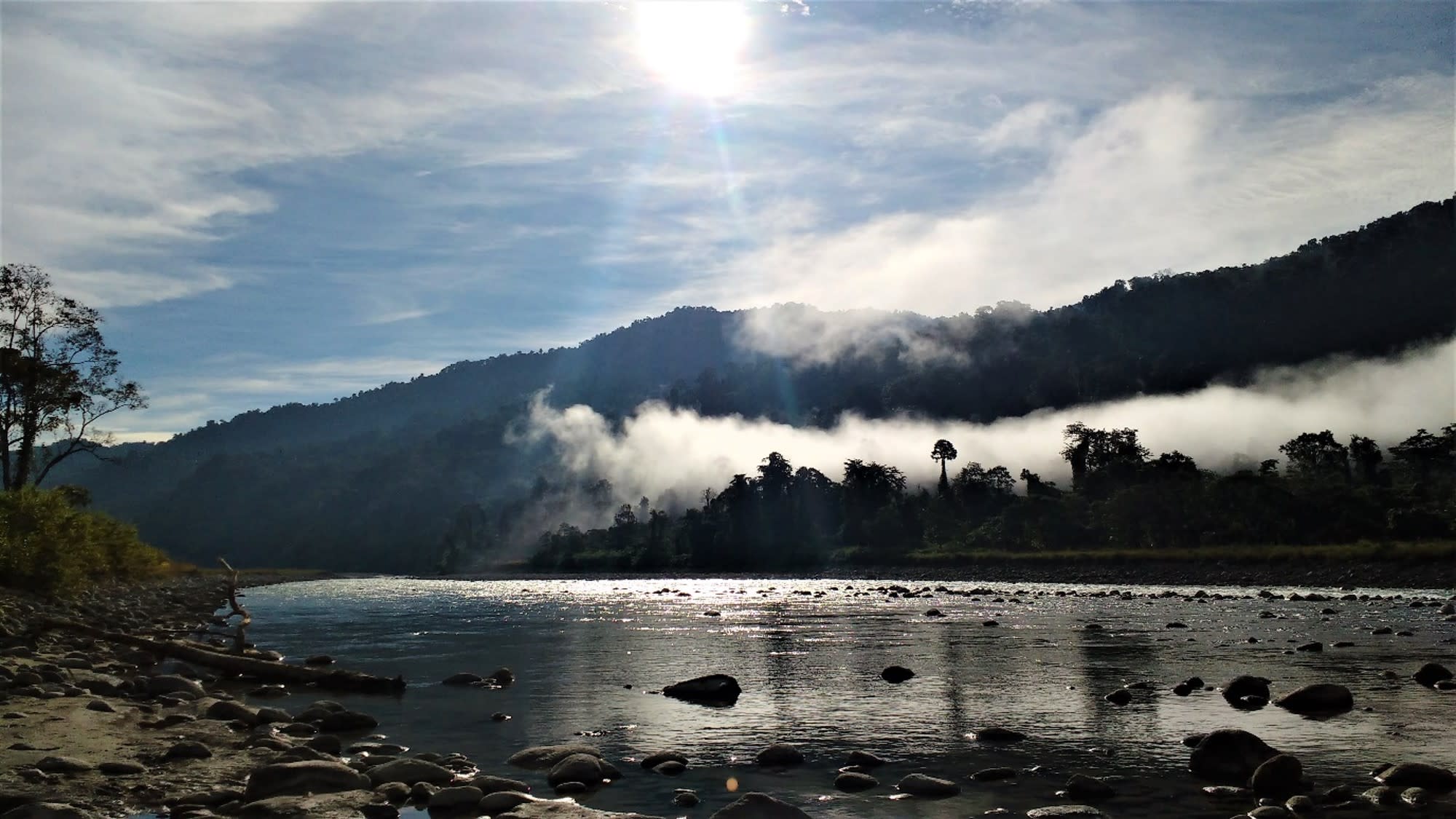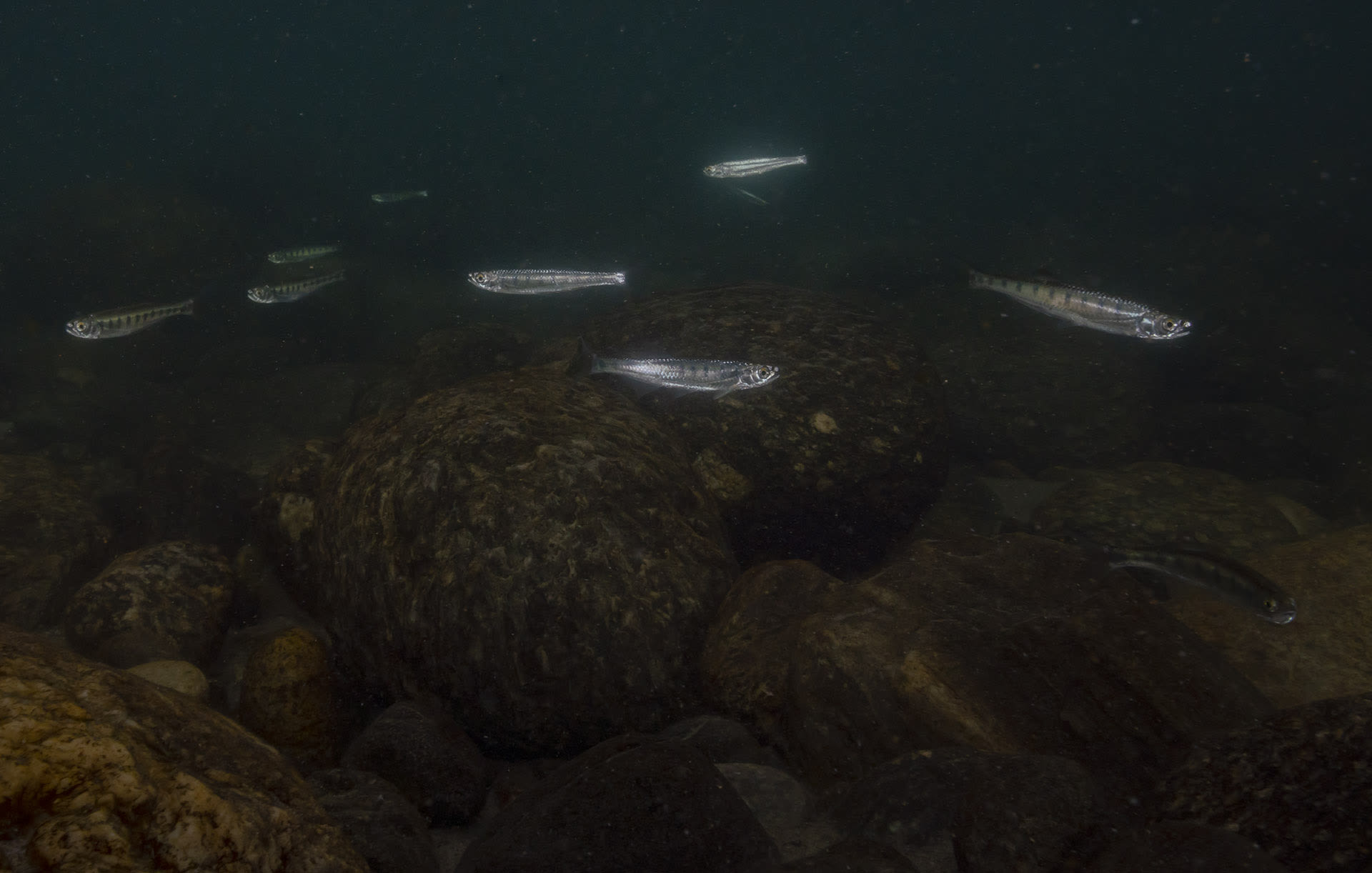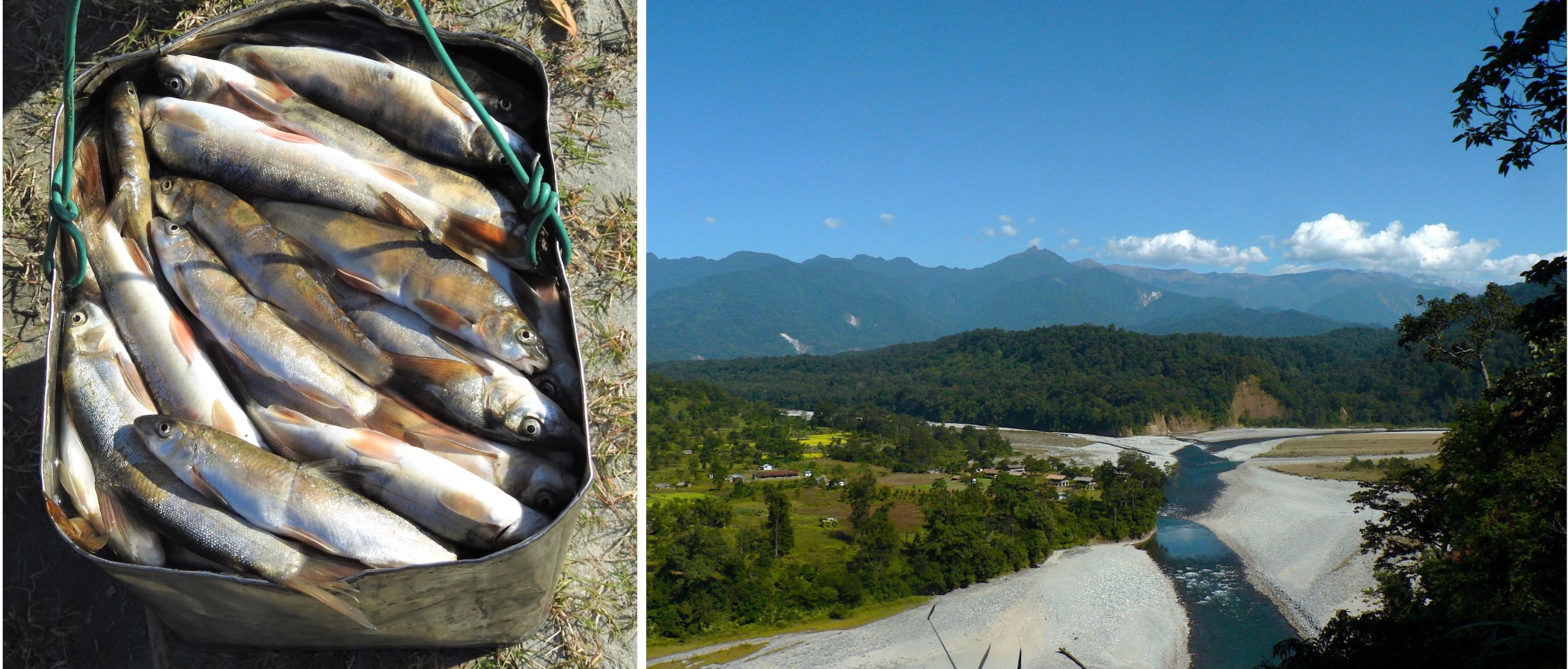“Woh dekho, Amitabh Bachchan chidiya,” Japang ji tells us, pointing to a boulder in the Namdapha river 500 metres ahead. And somewhat like Mr Bachchan himself, there is a tall, dark, and very, very handsome bird far ahead. The white-bellied heron stands on a huge boulder, surrounded by rapids thrashing with an immense force. With its long snaking neck extended, it waits to catch an unsuspecting fish using its strong, dark grey beak. Seconds later, it notices us approaching and takes to the sky, its pensive form interrupted, and showing off its glorious white belly. I would fly away too, were I a white-bellied heron approached by people.
When we think of threatened animals in India, the white-bellied heron is usually not a name that comes to one’s mind. Many species like the heron, unfortunately, are at risk and don’t get the attention they deserve. There is a worry that the heron will disappear one day as quietly as it lives its life — unobtrusively standing in a corner, feeding on fish while the rest of the party leaves it behind.

Ranging from an elevation of 200 to 4571 m above sea level, the Namdapha Tiger Reserve is extremely rich in biodiversity and holds several species found nowhere else in the country, such as the Namdapha flying squirrel, snowy-throated babbler and blue vanda. The Eastern Himalayan belt, under which the reserve falls, has the highest number of riverine bird species in the world. Photo: Megha Rao Cover: One of the rarest bird species in the world, white-bellied herons are solitary and usually seen in pairs only during the breeding season. The Namdapha Tiger Reserve in Arunachal Pradesh, where this individual was photographed, was the site of discovery of India’s first known nest of the heron in 2014. Cover Photo: Dhritiman Mukherjee
The white-bellied heron Ardea insignis, the world’s second largest heron, is seriously threatened. Formerly found in Nepal and Bangladesh too, it is now known to exist only in Bhutan, northeast India, and Myanmar, with a couple of records from southern China, where it is perhaps merely a vagrant. Despite this large swathe of land, its assumed global population does not exceed 250. Habitat fragmentation, hunting, loss of healthy riverine habitats and industrial developments have drastically reduced the species’ population and continue to do so. Bhutan, where it is highly protected, has the most secure population, but like India may hold many fewer than 50 individuals. As a Schedule I species in India, the white-bellied heron is entitled to the utmost protection by law. However, knowledge of its occurrence and the requirements to protect it are so scant that incompatible developments might be taking place along rivers which are amongst the last suitable habitats for the bird. Furthermore, opportunistic hunting, unlikely to grab the authorities’ attention could, with numbers so low, be catastrophic.
Arunachal Pradesh has seven large rivers with many tributaries, which eventually join the mighty Brahmaputra in Assam. Despite this vast, luscious landscape, the species presently is known to occur consistently in only one locality, in south-eastern Arunachal Pradesh bordering Myanmar —the Namdapha Tiger Reserve. The reserve’s 1,985 sq km has two main rivers, Noa-Dihing and Namdapha. The reserve, renowned for its splendid dipterocarp forests, holds over a thousand species of plants and animals. When one walks among the giant trees that sometimes top 50 metres, eastern hoolock gibbons can be seen swinging effortlessly overhead while a flock of Austen’s brown hornbills chat noisily close-by. A day in the reserve gives a sense of why the heron continues to live here. Namdapha is one of the few remaining leaflets from a catalogue of what the area’s forests were like until recently. Away from Namdapha, there have been only chance encounters of the bird elsewhere in India: for example Maguri Beel in eastern Assam and Manas Tiger Reserve in western Assam.
The white-bellied heron was first reported from Namdapha in 1994. A major breakthrough came in 2014 when, in a first for the country, Dr. Gopinathan Maheswaran and Dr. Himadri Sekhar Mondal from the Zoological Survey of India reported its nesting there. The thrill to know that the population was a breeding, resident one provided a glimmer of hope for the species. However, this study also showed just how sensitive the herons were to human disturbance. Years of encounters with hunters have presumably resulted in the herons being extremely shy of people there. However, this is not the case in Bhutan, where hunting is very rare and the birds can be approached much more closely.

(Top) A white-bellied heron walks over boulders in the Noa-Dihing River in Namdapha Tiger Reserve. An extremely shy and critically endangered bird, it feeds on fish in clear, fast-flowing rivers. (Above) Not only does Arunachal Pradesh have the highest forest cover for any state in India, but it is also brimming with many large and small rivers that provide the necessary habitat for thousands of plants, animals and fish such as these Barilius vagra that the herons eat. Photos: Sagar Gosavi (top), Dhritiman Mukherjee (above)
In 2017, a team from Nature Conservation Foundation, Mysuru, surveyed Arunachal Pradesh’s rivers for the white-bellied heron. This survey yielded no new sites of confirmed heron occurrence. This highlighted the gloomy situation and the urgent need to address it. Extensive survey of potentially suitable rivers thus far unchecked for the bird must be combined with protecting the one population we know we have. Recently, ATREE, Bengaluru has commenced targeted survey for the heron in Northeast India. In 2019, the staff of the Kamlang Tiger Reserve in Arunachal Pradesh noticed that one of their camera traps had photographed a white-bellied heron in their reserve, to much jubilation amongst fans of the bird and of great pride to the reserve staff. This reserve abuts the northern boundary of Namdapha Tiger Reserve. Perhaps the bird is from Namdapha; but the optimists hope it is part of a previously unknown population.
Other than Namdapha, only two other populations are known worldwide: in Kachin state (notably Hukaung Valley), Myanmar, which probably forms one linked population with Namdapha; and in central Bhutan. The white-bellied heron is assessed as “critically endangered” by the IUCN Red List – the last category before “extinct”. Though the heron’s future seems bleak, Bhutan’s Royal Society for Protection of Nature (RSPN) for the last 20 years has been determined to turn this situation around. Their longstanding programme focuses on understanding the heron’s ecology, including (in recent years) its dispersal. A conservation breeding programme is hoped soon to commence in Bhutan. It is even said that His Royal Highness’s father is a fan of the bird, which is certainly good for the heron!

(Left) Fishers in Arunachal Pradesh and Assam have slowly moved away from traditional forms of fishing and some have adapted destructive ways to fish, which not only kill masses of fishes but also most of the living creatures in a section of the river. Using chemicals such as bleach causes tremendous damage several kilometres downstream of the point of application. (Right) Clearing riverbanks and beds of sand and boulders can have a negative impact on the ecology of the river. The rivers of Arunachal Pradesh hold more than 65 species of riverine birds including some threatened bird species that need conservation efforts to ensure that their population does not decrease further. Photos: Rohan Menzies (left), Rohit Naniwadekar / CC BY-SA 4.0 (right)
Being a large, albeit elegant, grey water bird does not provide the heron with widespread appeal and charisma (although, we personally disagree). The dearth of knowledge about the species due to a lack of scientific focus, low numbers, and its elusive nature work against the heron’s prospects. The Eastern Himalayas have the highest riverine bird diversity in the world. However, with over 130 dams proposed in Arunachal Pradesh, riverine habitats here face an impending doom. Changes in fish population, and in water and sediment flows, and collision with electric transmission lines may all affect large bird populations along rivers. Hydroelectric projects can cause more harm than good, especially if a landscape such as Arunachal Pradesh is seen merely as a resource and not as a precious, biodiverse treasure.
For India to retain this species, it is important to monitor the Namdapha population regularly and keep its habitat undisturbed. The staff are well aware of the species’ peril. Dedicated towards its protection, they ensure that tourists and birders do not disturb the heron during their stays. However, much remains to be done in terms of awareness and education. Recognising the challenges of conserving this species and the strong benefits of international correspondence and cooperation, the IUCN Species Survival Commission has convened a White-bellied Heron Working Group. Established in 2015, the group supports stakeholders across countries to come together and share resources and ideas, with a joint aim to save the heron.
All considered, the heron seems very close to leaving the party. Without anybody noticing and with the gentlest of goodbyes. But we sure hope it doesn’t come down to that.